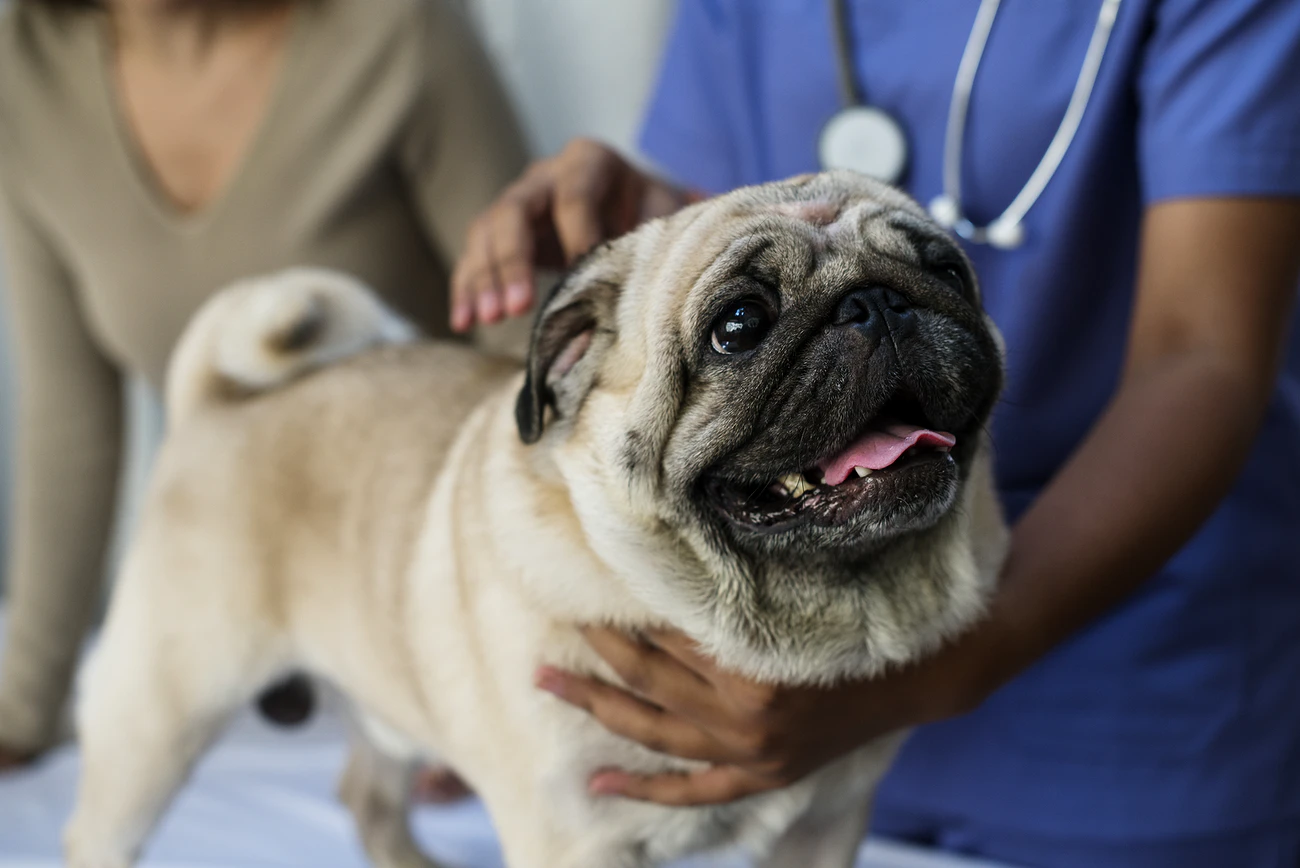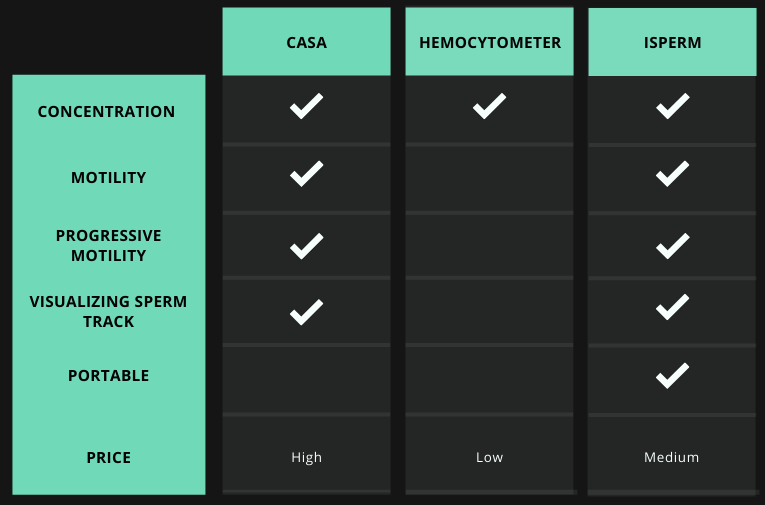Tips You Should Know for Successful Canine Artificial Insemination
iSperm mCASA is a mobile/mini computer-assisted semen analyzer. With the iSperm, your canine reproduction program can be more successful. Check out https://www.isperm.co/ or Contact us for the details.

Canine artificial insemination (AI) is a soaring trend these years, yet some might be still not sure if they are capable of and suitable for doing it. If you are one of them, this article brings you a complete set of ideas for how to carry out a successful AI.
What is artificial insemination?
Artificial insemination (AI) is to deposit semen collected from a sire in a dam’s cranial vagina or uterus. While some people may use fresh semen for AI, chilled semen and frozen semen are common ways to store desired semen straws before AI when situation requires. When applied in canine reproduction, the success rate of AI is the highest with fresh semen, 59 to 80 % with chilled semen and 52% to 60% with frozen semen. (To know the vale of AI for breeding dogs, you can refer to 5 Reasons for Why Canine Artificial Insemination Is Becoming A Mainstream for details.) Though fresh semen and chilled semen are suitable for all methods of AI, frozen semen cannot be used for intravaginal insemination. Other than the methods of AI, the number of motile sperm used for AI also plays a significant role in the success. AI should be performed with semen containing at least 200 million motile sperm.
What preparation should I do before canine artificial insemination?
Thorough preparation for dogs before AI is the key factor for smooth operation of AI. First of all, physical examination is important for both bitches and studs to ensure that they are healthy to undergo AI and appropriate for breeding.

Prepare dam for AI
The estrus cycle of female canine is the first thing to consider in terms of the timing of AI. As a bitch can only become pregnant when it is in estrus, a breeder has to have a good understanding of its estrus cycle to ensure AI is carried out when the bitch is in heat. On top of that, vaginal cytology and progesterone blood test provide a more accurate prediction of the ideal timing for AI.
Prepare stud for AI
A stud’s condition during semen collection is the priority to consider. Semen collection should be performed in a safe environment where a male canine does not feel stressed in the collection process. You can smoothen the collection process by offering a presence of a bitch in estrus. The ejaculates acquired under this scenario would have higher concentration. However, a bitch in estrus might not be easy to acquire. Thus, frozen-thawed cotton swabs that were swiped in the vagina of a bitch in estrus and swipes on the end of the tail of any dog can do the same trick.
During semen collection, you should put more attention to fractioning. Canine semen is made up with three factions. Fraction one and fraction three are consisted of prostatic fluid, and faction two is rich in sperm. Hence, fraction two is the part you need for breeding. It is proved that the fluid from fraction one and three might be detrimental to sperm and therefore each fraction of semen should be collected with different cones in protection of sperm fertility.
Meanwhile, You should also consider the interval of ejaculates. If your stud hasn’t had natural mating or semen collection for more than 10 days, the collected semen might show decreased motility. Motility is one of the most important indications for fertility. You might want to avoid performing AI with semen low in motility.
Why do I need semen analysis?
Semen analysis is required for satisfying outcome in canine AI as it guarantees the potential fertility of ejaculate and the following success rate of AI. Regular semen evaluation is also important for breeders to track male canine’s fertility over time. It can give an urgent notice to the breeders regarding canine’s reproductive performance, such as semen quality and fertility. The semen analysis result should ideally remain constant. If that is not the case, breeders should treat this as an alert regarding male canine’s fertility. Furthermore, one-time semen analysis does not guarantee male canine’s fertility and therefore multiple times of semen analysis should be carried out in 1 to 2 weeks time to confirm stud’s fertility.
In terms of sperm preservation, semen analysis is also critical as semen quality might change due to time and the preservation process. Therefore, even though semen is analyzed before preservation, post-thawed evaluation is required for every semen straw before the implementation of AI.
Preparation for semen analysis
When it comes to semen analysis, motility is an important indicator for fertility. Raw semen is too thick to accurately examine motility, hence it is fairly important to dilute raw semen with semen extender before semen analysis. You might easily overestimate sperm motility if dilution is omitted. The proper concentration for sperm analysis is 30 to 60 millions per millimeter where you can predict the ejaculate’s fertility more effortlessly with accurate semen analysis .
Semen analysis can be performed manually or with machines. Manual semen analysis is less accurate and more subjective. Therefore, it is more recommended to do semen analysis with the assistance of devices. Computer-assisted sperm analysis (CASA) systems, hemocytometer and iSperm mCASA can be used and are accurate for semen analysis. The chart below is the comparison between these three devices.

Semen dilution and preservation
Dilution is critical for accurate analysis result and semen preservation. If you would like to preserve semen as chilled semen or frozen semen, raw semen should be diluted with semen extender as it can help sperm maintain its motility and fertility. When choosing the right semen extender, it is important that it equips with anti-cold shock properties to prevent sperm impairment during freezing. No matter you are conducting semen preservation or semen analysis, dilution ratio depends on the sperm concentration. Raw semen with higher sperm concentration should be diluted with greater amount of semen extender. 1 to 1 dilution ratio is recommended for immediate inseminations. However, if semen is to be preserved, greater dilution is required. To ensure that AI is performed with semen containing at least 200 millions motile sperm per millimeter, dilution ratio should be carefully calculated when a breeder dilutes fresh semen into doses for preservation. iSperm can do the semen packaging calculation automatically and show the users the required amount of semen extender, motile sperm per dose and the number of doses to be dispensed after dilution. In the process of dilution, control of temperature is significantly important. The temperature of a semen sample should always be kept at 37°C, or 98.6°F.

Conclusion
Proper timing and high quality of semen are the main factors attributing to a successful AI. To achieve both, pre-AI preparation and semen analysis are both necessary. By implementing these practices, you can not only ensure the AI result but also monitor the physical health and fertility of your loving puppies. Successful AI and healthy and fertile canines are the promise of your current and future breeding value.
This article is brought to you by iSperm mCASA, a mobile/mini computer-assisted semen analyzer with high accuracy and affordability for use anytime anywhere by anyone. Check out www.isperm.co or Contact us to know how helpful iSperm can be for your breeding works.



